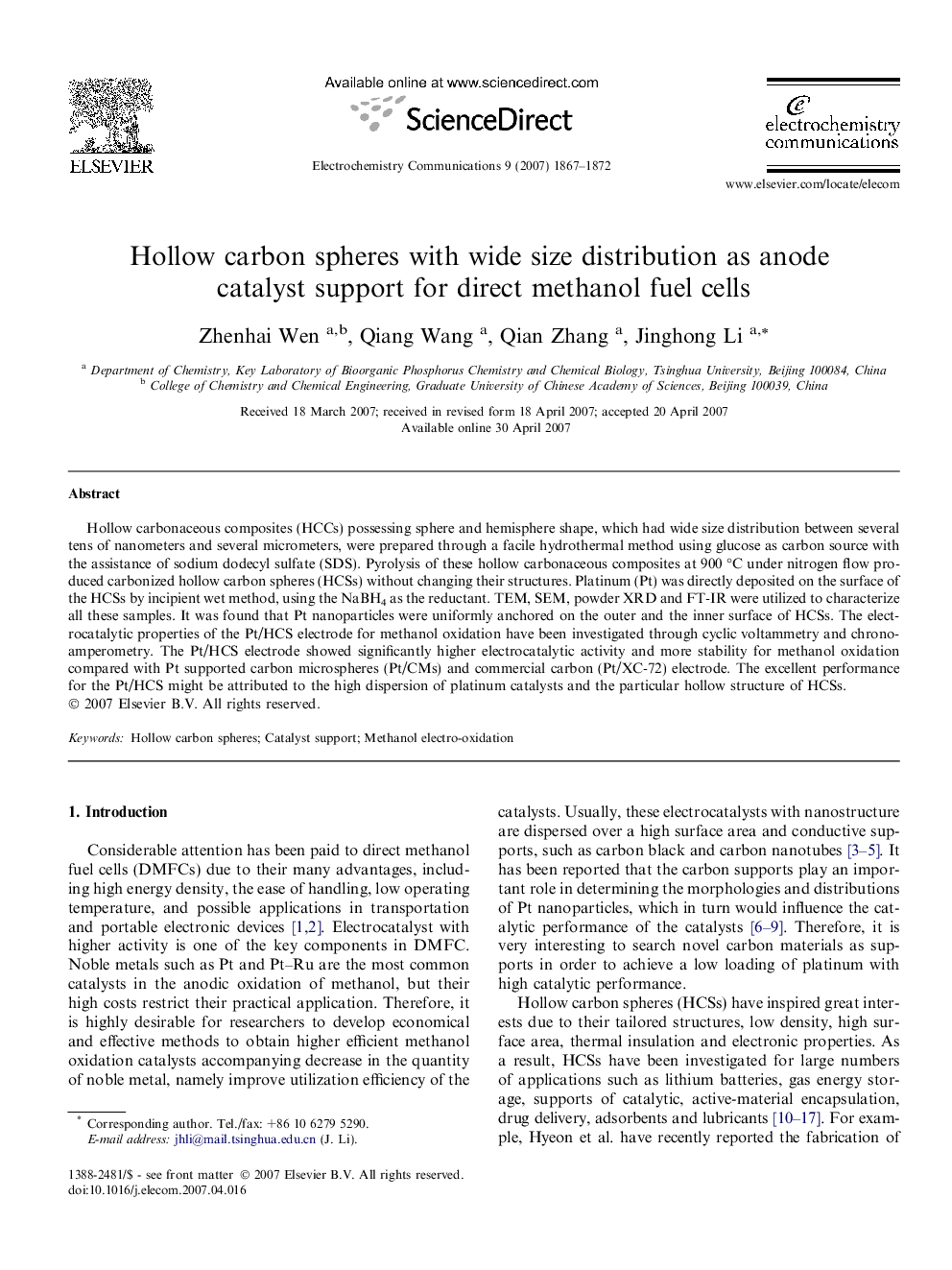| Article ID | Journal | Published Year | Pages | File Type |
|---|---|---|---|---|
| 181737 | Electrochemistry Communications | 2007 | 6 Pages |
Hollow carbonaceous composites (HCCs) possessing sphere and hemisphere shape, which had wide size distribution between several tens of nanometers and several micrometers, were prepared through a facile hydrothermal method using glucose as carbon source with the assistance of sodium dodecyl sulfate (SDS). Pyrolysis of these hollow carbonaceous composites at 900 °C under nitrogen flow produced carbonized hollow carbon spheres (HCSs) without changing their structures. Platinum (Pt) was directly deposited on the surface of the HCSs by incipient wet method, using the NaBH4 as the reductant. TEM, SEM, powder XRD and FT-IR were utilized to characterize all these samples. It was found that Pt nanoparticles were uniformly anchored on the outer and the inner surface of HCSs. The electrocatalytic properties of the Pt/HCS electrode for methanol oxidation have been investigated through cyclic voltammetry and chronoamperometry. The Pt/HCS electrode showed significantly higher electrocatalytic activity and more stability for methanol oxidation compared with Pt supported carbon microspheres (Pt/CMs) and commercial carbon (Pt/XC-72) electrode. The excellent performance for the Pt/HCS might be attributed to the high dispersion of platinum catalysts and the particular hollow structure of HCSs.
